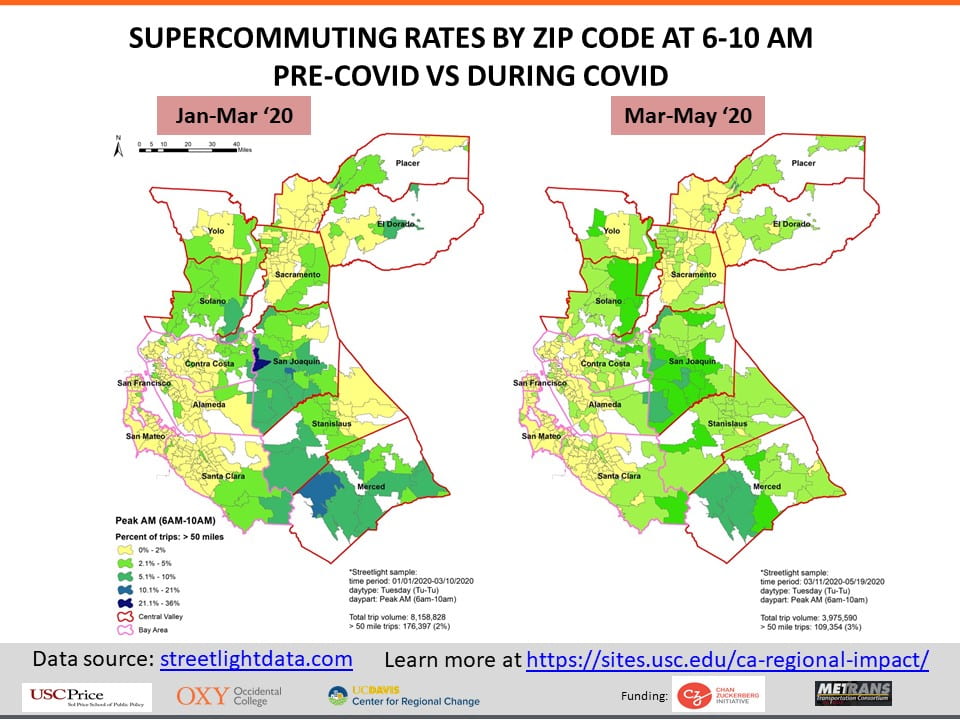Bonnie Wang, Seva Rodnyansky, Andre Comandon
Supercommutes are commutes to work that exceed 50 miles or 90 minutes one way. The two definitions have different implications. A time-based measure puts more emphasis on congestion and transit. Most workers with commutes over 90 minutes live within 30 miles of main job centers. The definition based on distance puts more emphasis on housing. It highlights people’s willingness to tradeoff commute time for greater housing consumption.
COVID-19 caused ground-shifting adjustments to commuting and work, often reinforcing pre-existing inequality. People with bachelor degrees and in high wage jobs were more likely to be able to telework. How did this affect supercommuting patterns? The maps below show the rate of supercommuting (trips longer than 50 miles out of all trips) in the Bay Area and Central Valley, one of the regions with the highest incidence of supercommuting.
- Supercommuting is more common in Central Valley than in the Bay Area and is most frequent in areas outside the Sacramento catchment area.
- Up to 10% of morning commutes in many San Joaquin and Merced county zip codes were supercommutes pre-COVID, and over 10% in Los Banos, French Camp, and Holt.
- Morning commute volumes dropped by over 50% in the Central Valley and Bay Area in the first 10 weeks of the COVID pandemic.
- Covid-19 reduced morning supercommutes throughout San Joaquin, Stanislaus, and Merced counties.
The data were compiled for every Zip Code Tabulation Area (Census equivalent of a Zip Code) within urbanized areas or with population over 1,000. The data come StreeLight Inc and are based on a sample of all cell phone locations.
